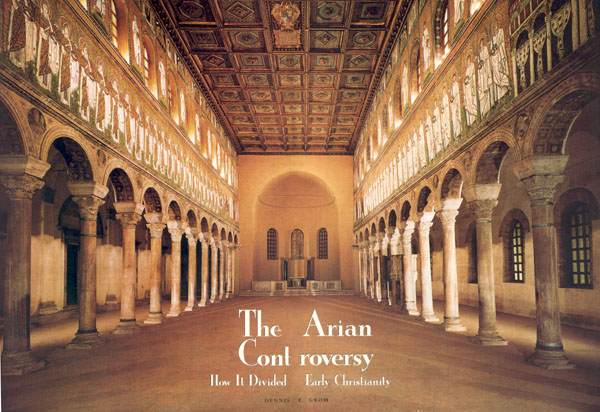Image Details

Photo by Scala/Art Resource, N.Y.
Dazzling mosaics illuminate the interior of this fifth-century palace church in Ravenna, Italy, today called Sant’Apollinare Nuovo. The brilliant images that adorn both walls of the nave and that once covered the apse played an unusual role in the fifth- and sixth-century Arian controversy—the struggle between the Catholic (Orthodox) church and the Arians, who maintained a heretical belief about the Trinity. While the Orthodox church claimed that God the Father and his Son were equal, the Arians viewed Jesus as a prototypical believer, but not the equal of his Father. The Ostrogoth king Theodoric commissioned the church, dedicated to Christ the Redeemer, and much of its extant artwork after he invaded Italy in 489 and established Ravenna as his capital, bringing Arianism with him.
The original mosaics of Sant’Apollinare Nuovo reflected Theodoric’s religious convictions and his belief in his divine appointment as king. But when the Orthodox church subdued the Arian controversy in the mid-sixth century, it eradicated all—or almost all—traces of Theodoric and his faith from the mosaics.
